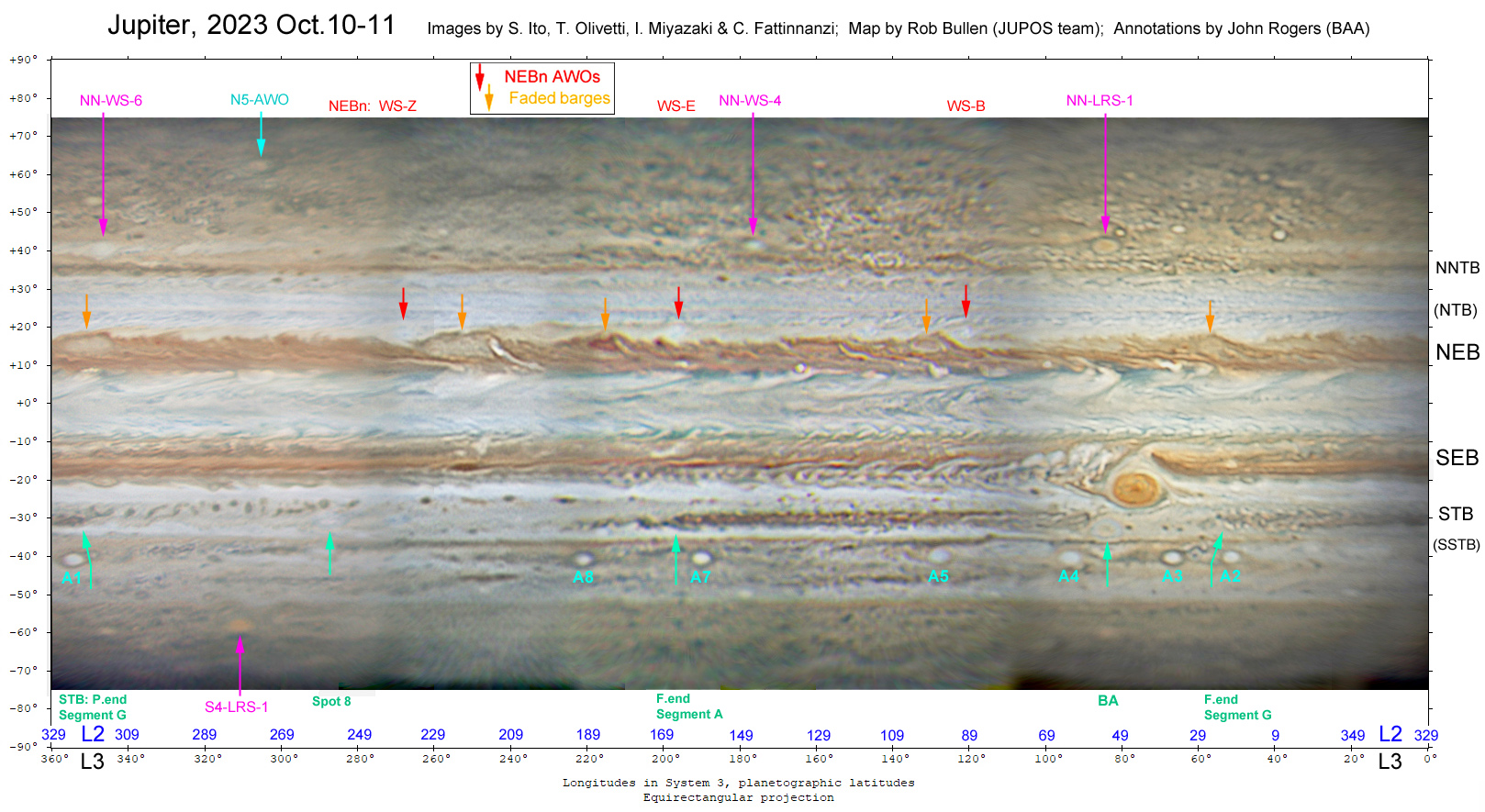2023 October 30
Jupiter coming to opposition
Jupiter will be at opposition this Friday, 2023 Nov.3, at about 05h UT. With a declination of 13.7°N, it is now higher in the sky for northern-hemisphere observers than at any time since 2015. Some imagers in Europe, Japan, and North America are now achieving images of a standard that we have rarely seen from these latitudes. Here we show some recent examples of the best views taken from the UK, France, and other places above 45°N, including some from the BAA Members’ Gallery. (Note that two of them show Ganymede passing close to Jupiter’s south pole, and in the second of these, Io and its shadow are in transit.)
Around the date of opposition, observers may be lucky enough to see a satellite transiting in front of, or very close to, its shadow. This year, within 24 hours after opposition, there will be three such events. Io will transit in front of its shadow (Nov.3, 09:29-11:37 UT), then Ganymede will transit adjacent to its shadow (14:18-15:18), then Europa likewise (Nov.4, 01:15-03:28). The Io and Ganymede events will be visible from Australia and the Far East; the Europa event, from Europe and North America. Predictions are from the BAA Handbook, and they can be visualised using the WinJUPOS software.
Jupiter’s atmosphere appears quite quiet and normal at present, with no dramatic activity. But there are still plenty of interesting features to see. Attached is a map of the planet on Oct.10-11. The most obviously active region is the North Equatorial Belt, where typical disturbances have resumed, quite dynamically, both within the belt and along its south edge. The Great Red Spot is notable for its continuing shrinkage; it is the smallest that it has ever been.
BAA members are welcome to post images in the Members’ Gallery, and/or to send them by email to the Section Director. Please note two essential points about Jupiter images submitted to the BAA:
- i) AI software must not be used on them (a policy also adopted by other organisations that collect amateur images for scientific work, in order to avoid artefacts).
- ii) The date and time (UT), observer’s name, and other relevant data, must be written on the image.
–John Rogers, 2023 Oct.30


| The British Astronomical Association supports amateur astronomers around the UK and the rest of the world. Find out more about the BAA or join us. |
